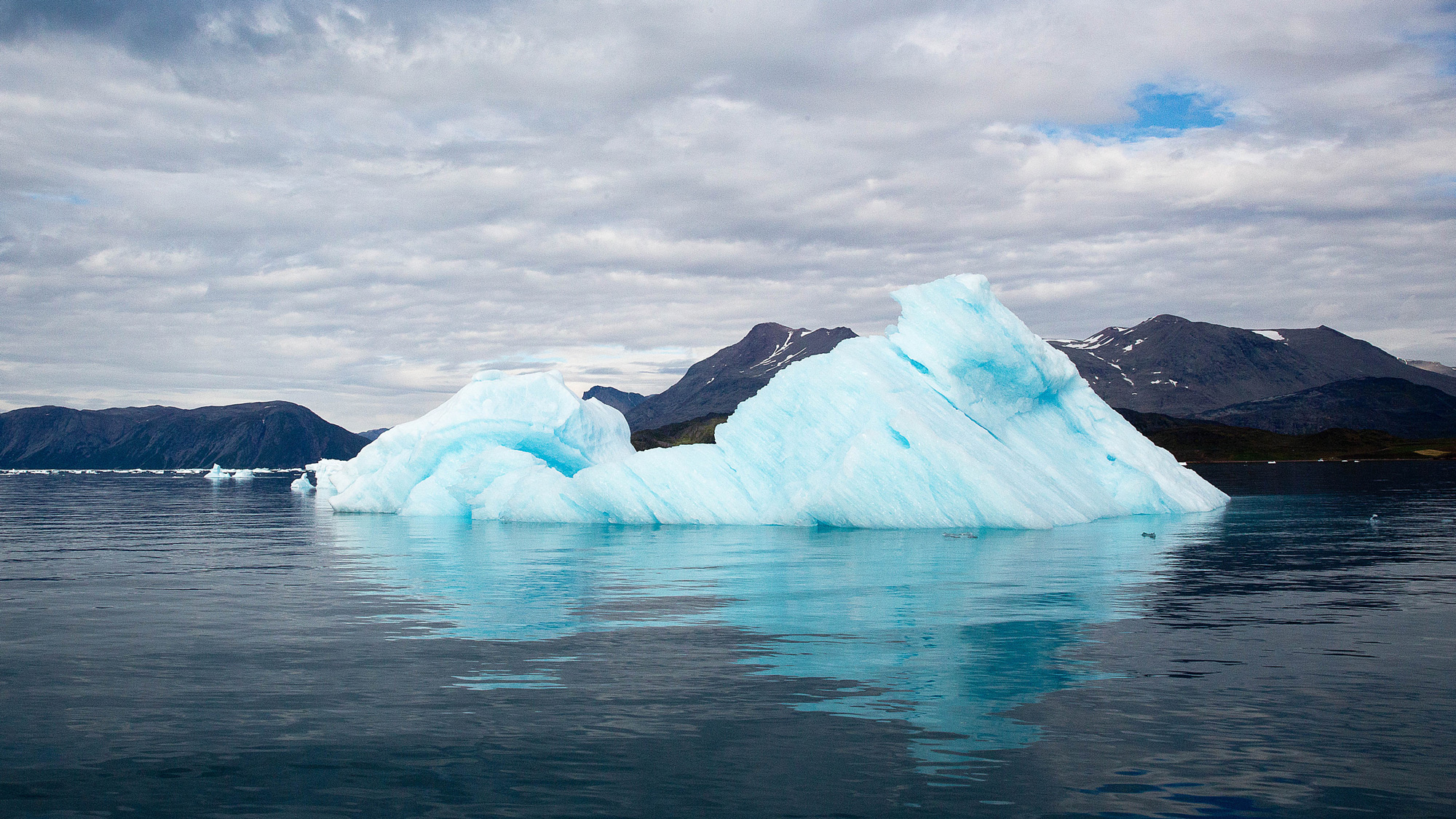–
“For every ton of carbon dioxide that a person releases anywhere on earth, three square meters of arctic summer sea ice melts.” The Hamburg polar researcher Dirk Notz uses this short and concise formula to sum up the result of his new study, which he carried out together with a specialist colleague and which the journal “Science” is now printing:
“For example: If you fly from Germany to New York and back, you have released around a ton of carbon dioxide. In Germany we are currently producing ten tons of carbon dioxide per person per year, that is, each of us here in Germany 30 square meters of sea ice melts away every year. “
Everyone knows how complex the earthly weather and climate kitchen is. And should there be such a simple connection between personal greenhouse gas emissions and the decline in sea ice in the arctic summer? In the beginning, the researcher from the Max Planck Institute for Meteorology himself was skeptical, as he says:
“We were only surprised when we saw this linear relationship. However, this linear relationship between sea ice, at least with regard to global temperature, has been known for many years. We just haven’t been able to explain it so far.”
Relationship between greenhouse gas emissions and sea ice depletion
So: the warmer the earth’s atmosphere, the more the sea ice area shrinks in the arctic summer. A trend that climate researchers have been observing since the beginning of the satellite era almost four decades ago. Dirk Notz and his Dutch colleague Julienne Stroeve have now gone one step further. They also used measurements from ships and aircraft in the Arctic, which date back to the 1950s. And they put the sea ice loss in relation to the development of global greenhouse gas emissions:
“And also see this linear relationship there. Which for us is an indication that there has to be a very fundamental mechanism that simply enforces this linear relationship, so to speak.”
Crucial things happen at the edge of the sea ice. It’s just cold enough there for the ice. That means: The concentrated power of the sun and the greenhouse effect caused by greenhouse gases such as CO2 is a little too weak to melt the pack ice at this point. One could also say that the ice cannot be unbalanced by the radiant energy that hits its edge:
“And if we release a ton of carbon dioxide somewhere on earth, the overall climate will be a bit warmer. And that will cause the ice edge to move north, to a region with less solar radiation – simply to maintain this balance . “
“For the first time we can calculate exactly when the arctic pack ice will be gone.”
With the formula “One ton of CO2 = minus 3 square meters of summer sea ice”, the consequences of our actions for the climate become much clearer. But that’s not all. Dirk Notz assumes: This correlation between carbon dioxide emissions and pack ice shrinkage will remain valid in the future. The result:
“Now, for the first time, we can calculate very precisely when the Arctic pack ice will have disappeared in summer. Our study shows that the Arctic summer sea ice will be gone when we have released around a thousand gigatons of carbon dioxide That is 1,000 billion tons. At the moment, mankind releases around 35 billion tons of carbon dioxide every year. With current emissions, the Arctic would be ice-free for the whole of September in about 30 years. “
Exactly today, the Paris Climate Agreement comes into force. With the declared aim of limiting global warming to two degrees Celsius. Here, too, researchers have estimated how much carbon dioxide is allowed to escape into the atmosphere in order to achieve this goal. It’s even less than a thousand gigatons! From which the Hamburg meteorologist deduces “that the two-degree target is not enough to preserve the Arctic sea ice in summer.”
Can the world climate summit in Marrakech make a difference?
Could the new study therefore shake up politicians and governments more who will be meeting again for the world climate summit next week, this time in Marrakech? Peter Lemke from the Alfred Wegener Institute for Polar and Marine Research is skeptical: “Sometimes I’m not so sure whether anything is helpful at all to show our politicians how serious the situation actually is.”
Translating personal CO2 emissions into arctic ice losses – the climate physicist considers this idea to be quite serious:
“I think that’s an interesting way of looking at the decline and what we’re doing. You can of course make this connection. It’s a correlation. It’s interesting. We’ll have to wait and see whether it’s really true in detail.”
–


